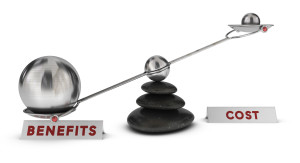Decision-makers typically select a vendor based on price, service, and relationship. They often evaluate this by considering what is most important to them personally.
There was once a potential customer of mine that had an industry-leading status on social responsibility. I decided to build my proposal in a way that highlighted how we could contribute to their initiatives on social responsibility. In the debrief meeting to discuss why I didn’t win the business, I discovered that the key decision-maker couldn’t care less about social responsibility. I completely missed the mark. Always make your proposal all about what’s important to the influencers and decision-makers.
Seven Steps to a Compelling Proposal
1. Find out something that your competitors don’t know. An excellent opportunity to do this is during your initial meeting with the prospect. If you ask questions after the RFP process has started, the customer may share the answers with all bidders, including your competitors.
2. Identify something you offer that they’re not getting from the current supplier. This may be something that the current provider can provide, but for some reason, they have not offered it.
3. Read your proposal. Early in my career, I would rely on other team members to complete my proposals. I would glance through our written response before sending it to the customer. After losing a significant opportunity, I read the proposal more thoroughly and found many errors.
4. Prove that you’re the lowest Total Cost of Ownership. A successful proposal will not only outline your strategy to save the client money but also save them time. Accomplish both by making it easy to save money.
5. Demonstrate how you help your clients be successful. For example, what specifically will you do to guarantee cost savings?
6. Give them what they want. If you talk to the prospect enough and ask the right questions, they will probably tell you exactly what they want. What is most important to them? What is motivating them?
7. Offer an alternate proposal. I know I just wrote about giving them what they want, however, in addition to giving them what they want, offer something that is not exactly what they’re looking for but costs less money.
“Identify something you offer that they’re not getting from the current supplier.”
– Michael Tattersall
Stay positive and feel good about what you’re offering. The time and effort that you have dedicated is about to pay off.
Mindset – Empathic
When you’re creating your proposal, think from the customer’s point of view. Think of yourself and the customer as one team working together toward the same goal. It’s better to have a short proposal that only highlights what’s most important to the customer than to have a long proposal showing everything you have to offer. The shorter the proposal, the more likely it is that the prospect will read it.
Nutrition – Chicken Soup
Having a feeling of togetherness reminds me of comfort foods. Homemade chicken soup is probably the best comfort food there is. Avoid highly processed soup in a can and make your own using organic chicken, bone broth, and tons of vegetables. Add in your favorite spices and himalayan salt to taste.
Essential Oils – Frankincense
Frankincense is often used in a religious setting when people are together deep in thought & prayer. It will help you channel into an empathic state of mind. Diffuse or rub a couple of drops into your temples.
